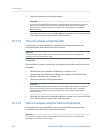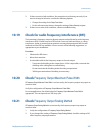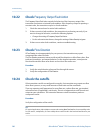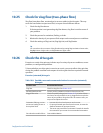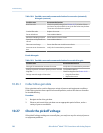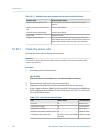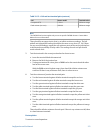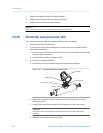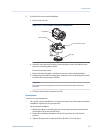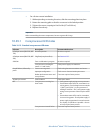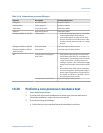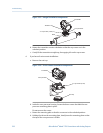
To know whether your pickoff voltage is unusually low, you must collect pickoff voltage
data during the problem condition and compare it to pickoff voltage data from a period of
normal operation.
Possible causes and recommended actions for low pickoff voltageTable 10-10:
Possible cause Recommended actions
Air entrainment • Increase the inlet or back pressure at the sensor.
• If a pump is located upstream from the sensor, increase the
distance between the pump and sensor.
• The sensor may need to be reoriented. Consult the installa-
tion manual for your sensor for recommended orienta-
tions.
Faulty wiring runs between the
sensor and transmitter
Verify wiring between sensor and transmitter.
Process flow rate beyond the lim-
its of the sensor
Verify that the process flow rate is not out of range of the sen-
sor.
Slug flow Check for slug flow. See Section 10.25.
No tube vibration in sensor • Check for plugging.
• Ensure sensor is free to vibrate (no mechanical binding).
• Verify wiring.
• Test coils at sensor. See Section 10.28.1.
Moisture in the sensor electronics Eliminate the moisture in the sensor electronics.
The sensor is damaged, or sensor
magnets may have become de-
magnetized
Replace the sensor.
10.27.1 Collect pickoff voltage data
Pickoff voltage data can be used to diagnose a variety of process and equipment
conditions. Collect pickoff voltage data from a period of normal operation, and use this
data as a baseline for troubleshooting.
Procedure
1. Navigate to the pickoff voltage data.
2. Observe and record data for both the left pickoff and the right pickoff, over an
appropriate period of time, under a variety of process conditions.
10.28 Check for electrical shorts
Shorts between sensor terminals or between the sensor terminals and the sensor case can
cause the sensor to stop working.
Troubleshooting
Configuration and Use Manual 209




